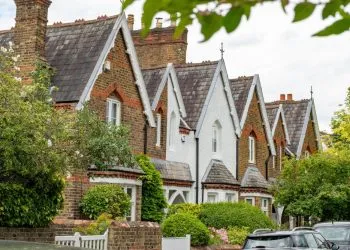Mortgage experts have hit out at proposals to revive the Help to Buy scheme, which was pulled earlier this year.
 A report in The Times said the Prime Minister Rishi Sunak was considering re-introducing the first-time buyer scheme as part of attempts to help more people onto the property ladder.
A report in The Times said the Prime Minister Rishi Sunak was considering re-introducing the first-time buyer scheme as part of attempts to help more people onto the property ladder.
It comes after Labour pledged to create 300,000 more homes a year if it were to be elected.
But the idea of bringing back Help to Buy has not gone down well with many mortgage experts.
From concerns re-introducing the scheme would inflate house prices to suggestions the plans were simply a ‘political ploy’ by the Tories to win votes at the election, the news has been met with a mixture of alarm and scepticism.
Lewis Shaw, owner and mortgage broker at Riverside Mortgages, said: “This is perhaps the worst idea the Tory government have had since the mini-Budget.
“Most of the problems caused in the property market are from political intervention and tinkering where none is needed.
“They should stay the hell out of the market and let it find its equilibrium. Also, this has nothing to do with helping people get homes. It’s a cynical move to buy votes, nothing more, nothing less and no one should be fooled by it.”
Higher house prices
Help to Buy: Equity Loan was launched in 2013 and provided homebuyers who had a 5% deposit with loan to pay for up to 20% (40% in London) of the purchase price of a new build property. It became exclusive to first-time buyers in 2021 and was finally scrapped in March 2023.
Although popular with buyers, it faced criticism not least because it increased demand for homes and inflated house prices when stock was in short supply.
Indeed, many mortgage insiders cited this as their main concerns in reviving the scheme.
Kundan Bhaduri, property developer and portfolio landlord at The Kushman Group, said: “The Help to Buy scheme has the potential to exacerbate supply shortages in the housing market by actually increasing demand for homes.
“This scheme has often led to higher house prices and further restricted the supply of affordable housing. One of the primary challenges in the housing market is a lack of affordable housing, particularly in urban areas, where demand is high, and land is limited.”
More solutions for first-time buyers needed
Not everyone was against the idea of bringing the scheme back. Rohit Kohli, operations director at The Mortgage Stop, said: “Help to Buy supported thousands of people into their first home and it’s welcome news that it’s being considered again after being completely overlooked in the budget.”
But he thought it should be part of a wider offering of support for would-be first-time buyers.
He added: “This isn’t the painkiller to the first-time buyer headache – it has to be part of a wider range of solutions including looking at more innovative ways to help renters who pay thousands a year get through affordability hurdles.
“Help to Buy itself does need to be looked at as it’s not perfect, raising funds to do home improvements, as an example, rather than staircase to full ownership can be problematic. And the fees involved with help to buy schemes can add up very quickly (valuation fees, legal fees etc.)”
What other schemes are available to first-time buyers?
First-time buyers who are looking for support to help them into homeownership should start by looking at the Lifetime ISA – a government-backed savings scheme into which savers can tuck away up to £4k a year.
The benefit of using this account is savers get a 25% bonus, which they will receive when they buy their first home. You can find out more about Lifetime ISAs here.
Shared ownership is another option for those struggling to save a deposit. This allows buyers to purchase a percentage of a property and pay rent on the remainder. It’s restricted to certain homes which are under the auspices of housing associations so you will need to narrow your search, but it offers a great solution to taking that vital first step on the ladder.
It may also be worth looking to see if you are eligible for First Homes or the Mortgage Guarantee schemes.














